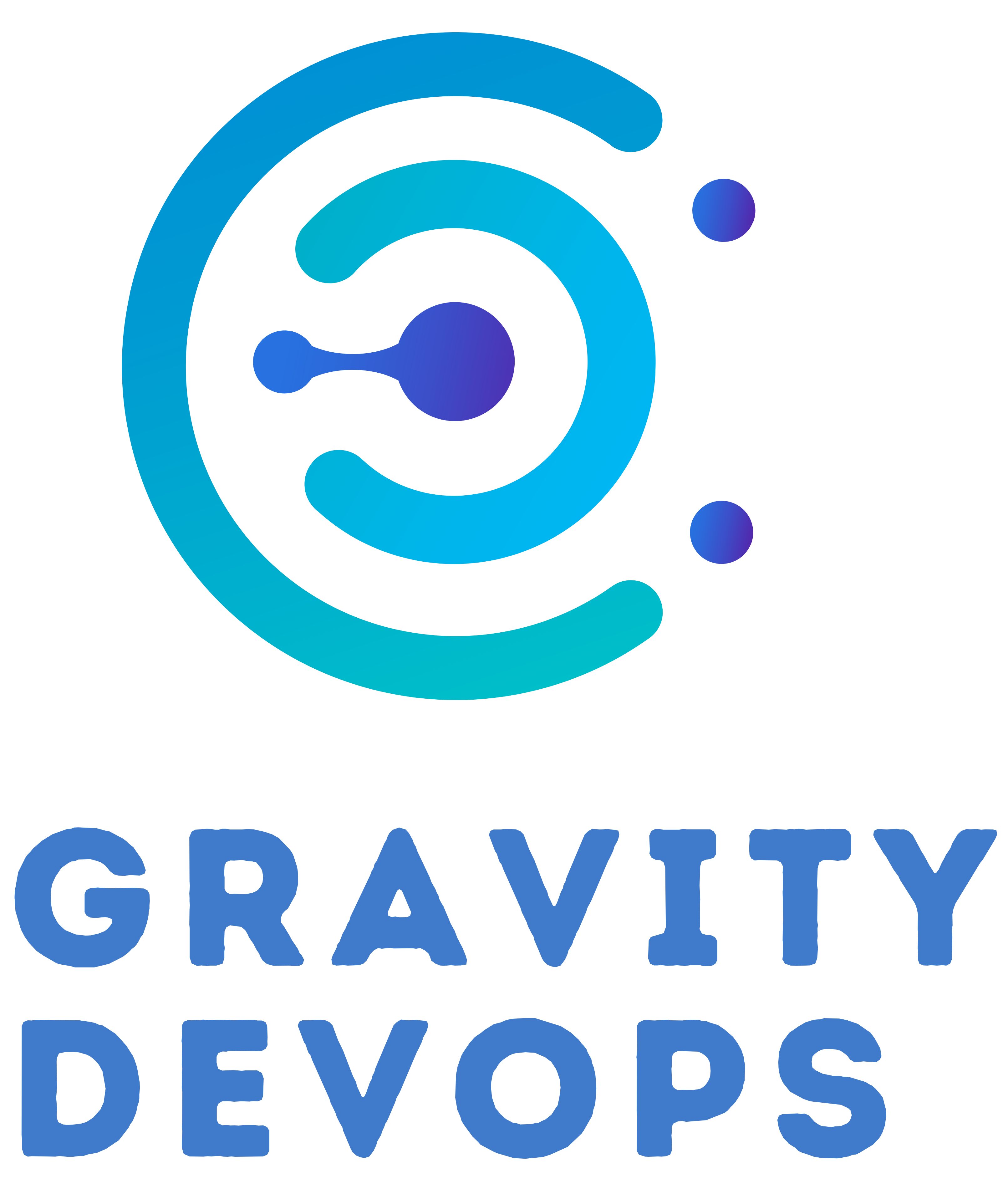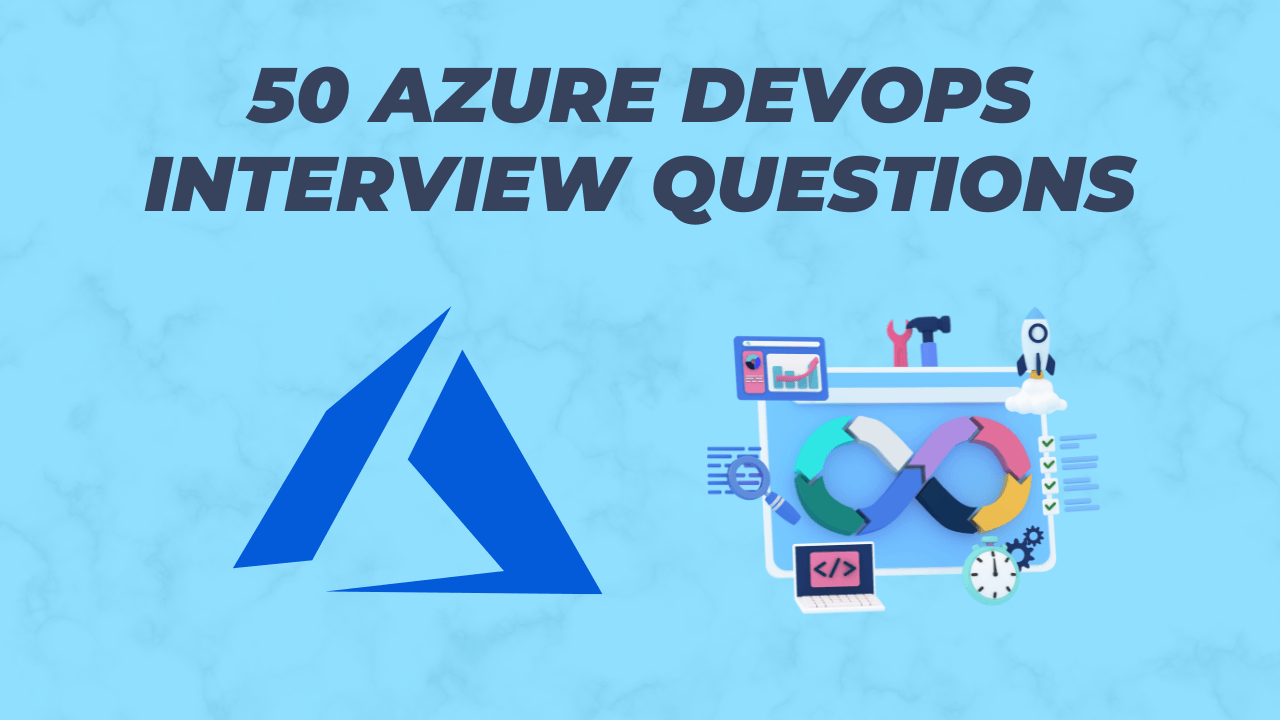As the demand for cloud-based solutions and continuous delivery grows, Azure DevOps has emerged as a leading platform for DevOps practices. Companies across the globe are adopting Azure DevOps to streamline their development processes and enhance collaboration between development and operations teams. If you are preparing for an Azure DevOps interview, you might want to familiarize yourself with some common interview questions and their answers. Here are 50 Azure DevOps interview questions along with detailed explanations to help you ace your interview:

1. What is Azure DevOps?
Azure DevOps is a comprehensive cloud-based platform offered by Microsoft, designed to support the entire development lifecycle. It encompasses a range of services such as version control, continuous integration, continuous delivery, project tracking, and collaboration tools.
2. What are the main components of Azure DevOps?
Azure DevOps consists of five main components: Azure Boards, Azure Repos, Azure Pipelines, Azure Test Plans, and Azure Artifacts.
3. What is Azure Boards?
Azure Boards is a project management tool that helps track work items, manage backlogs, and plan sprints using Agile methodologies.
4. Explain Azure Repos.
Azure Repos is a version control system in Azure DevOps that provides both Git and Team Foundation Version Control (TFVC) repositories to manage source code.
5. What are Azure Pipelines?
Azure Pipelines is a continuous integration and continuous delivery (CI/CD) service that automates building, testing, and deploying code to various environments.
6. How can you define multi-stage pipelines in Azure DevOps?
Multi-stage pipelines in Azure DevOps allow you to define complex build and release workflows with multiple stages and jobs, offering greater control over the deployment process.
7. How do you secure sensitive data like passwords in Azure DevOps Pipelines?
Sensitive data like passwords can be secured using Azure Key Vault or Azure Pipelines’ built-in variable groups and secure files.
8. What is YAML pipeline in Azure DevOps?
YAML pipelines allow you to define your build and release processes as code using YAML syntax, making it easier to version control and manage the CI/CD pipeline alongside the source code.
9. How do you create a new pipeline in Azure DevOps?
To create a new pipeline, navigate to your Azure DevOps project, click on “Pipelines,” then select “New Pipeline.” You can choose from Azure Repos Git, GitHub, or other repositories as the source.
10. What are agents in Azure Pipelines?
Agents in Azure Pipelines are responsible for executing the tasks defined in the pipeline. Microsoft-hosted agents are provided by Azure, while you can also set up self-hosted agents on your own infrastructure.
11. How can you trigger a pipeline in Azure DevOps?
Pipelines can be triggered manually, based on code commits, pull requests, or scheduled triggers.
12. Explain the difference between a release pipeline and a build pipeline.
A build pipeline is responsible for compiling, testing, and packaging the code, while a release pipeline handles deploying the built artifacts to specific environments.
13. What is a release gate in Azure DevOps?
A release gate is a pre-deployment approval mechanism that allows automated or manual approval before proceeding with a deployment.
14. How can you deploy an Azure function using Azure DevOps?
You can deploy an Azure function using the “Azure Function App” task in the release pipeline, which will publish the function’s code to the specified function app.
15. What is Azure Test Plans?
Azure Test Plans is a tool for manual and exploratory testing, including test case management, test suites, and test configurations.
16. How do you integrate automated tests into an Azure DevOps pipeline?
Automated tests can be integrated into an Azure DevOps pipeline using tasks like “Visual Studio Test,” “NUnit,” “MSTest,” or “SpecFlow” depending on the testing framework used.
17. What is the difference between Azure DevOps and Jenkins?
While both Azure DevOps and Jenkins are CI/CD tools, Azure DevOps offers a more integrated and comprehensive suite of services, whereas Jenkins is an open-source automation server primarily focused on continuous integration.
18. Can you deploy an Azure web app to multiple regions using Azure DevOps?
Yes, you can create multiple deployment stages in an Azure DevOps release pipeline, each targeting a different region or environment.
19. How do you handle secrets in Azure Pipelines?
You can store secrets securely using Azure Key Vault or Azure Pipelines’ built-in secret variables.
20. What is the use of “Azure Resource Manager (ARM) templates” in Azure DevOps?
ARM templates allow you to define and provision Azure infrastructure as code, enabling consistent and repeatable deployments.
21. How can you enforce branch policies in Azure Repos?
Branch policies in Azure Repos help enforce rules like requiring code reviews, build validation, and work item association before merging changes into specific branches.
22. How do you rollback a deployment in Azure DevOps?
In Azure DevOps, you can use the “Rollback” feature to redeploy a previous version of the release in case of issues with the current deployment.
23. Explain the process of linking work items to commits in Azure Repos.
Work items can be linked to commits by mentioning the work item ID in the commit message, or you can use the Azure Boards web portal to link commits to work items manually.
24. What are approval gates in release pipelines?
Approval gates are used to pause a deployment at certain stages until manual or automated approval criteria are met.
25. How can you set up continuous deployment for an Azure Logic App using Azure DevOps?
Continuous deployment for an Azure Logic App can be achieved using the “Azure Logic App” task in the release pipeline, which deploys the Logic App’s definition to the specified Logic App resource.
26. What is “Infrastructure as Code”?
Infrastructure as Code (IaC) is a practice of managing and provisioning infrastructure through machine-readable definition files, such as ARM templates or Terraform scripts.
27. How can you manage releases across multiple environments in Azure DevOps?
Azure DevOps release pipelines allow you to define multiple stages corresponding to different environments, enabling you to manage releases across development, testing, staging, and production environments.
28. How do you handle versioning of artifacts in Azure DevOps?
Versioning of artifacts in Azure DevOps can be managed using the “Build Number” format or by using a custom script to determine the version number during the build process.
29. What is “Continuous Integration”?
Continuous Integration (CI) is the practice of integrating code changes from multiple developers into a shared repository multiple times a day. This is typically followed by an automated build and test process.
30. How can you automate the creation of an Azure virtual machine using Azure DevOps?
You can use ARM templates and Azure Resource Manager tasks in Azure DevOps to automate the creation of an Azure virtual machine.
31. What is “Release Retention” in Azure DevOps?
Release retention allows you to specify how long completed releases should be retained before being automatically deleted to manage storage costs.
32. How can you integrate Azure DevOps with third-party services like Slack or Microsoft Teams?
Azure DevOps provides integrations with various third-party services through “Service Connections.” You can use these connections
to send notifications or trigger actions in other tools.
33. What is the “Azure DevOps CLI”?
The Azure DevOps CLI is a command-line interface that allows users to interact with Azure DevOps services from the command line or from scripts.
34. How can you handle large files in Azure Repos?
Azure Repos supports Git LFS (Large File Storage) to manage large files more efficiently.
35. Explain “Azure Blueprints.”
Azure Blueprints allow you to define a repeatable set of Azure resources that adhere to organizational standards, patterns, and requirements.
36. What is a “Pull Request” in Azure Repos?
A Pull Request in Azure Repos is a formal request to merge code changes from one branch into another, allowing for code review and collaboration before merging.
37. How do you manage user access and permissions in Azure DevOps?
User access and permissions in Azure DevOps can be managed through “Azure DevOps Groups” and “Azure Active Directory (Azure AD)”.
38. What is the purpose of a “Task Group” in Azure DevOps?
A Task Group in Azure DevOps allows you to encapsulate a sequence of tasks into a single reusable unit, simplifying the creation of pipelines.
39. How can you automate the deployment of a containerized application to Azure Kubernetes Service (AKS)?
You can use the “Kubernetes” task in the Azure DevOps release pipeline to automate the deployment of containerized applications to AKS.
40. Explain the concept of “Azure DevOps Project” in the Azure portal.
Azure DevOps Project is a template-based mechanism that simplifies the setup of an end-to-end DevOps pipeline with pre-configured Azure Boards, Repos, Pipelines, and other services.
41. What is the purpose of “Variable Groups” in Azure DevOps?
Variable Groups allow you to define a set of variables that can be used across multiple pipelines, promoting consistency and manageability.
42. How do you automate the provisioning of an Azure SQL Database using Azure DevOps?
You can use ARM templates or Azure CLI commands within an Azure DevOps pipeline to automate the provisioning of an Azure SQL Database.
43. What is the benefit of using “Environments” in Azure DevOps?
Environments in Azure DevOps provide a way to model and manage the infrastructure and configurations for different deployment targets.
44. How do you handle external dependencies in an Azure DevOps pipeline?
External dependencies can be managed by restoring packages using package managers like NuGet, npm, or Maven, depending on the application’s technology stack.
45. Explain “Continuous Delivery.”
Continuous Delivery (CD) is the practice of automatically deploying code changes to production-like environments after passing through a series of automated tests.
46. How can you deploy an Azure Function with a private endpoint using Azure DevOps?
Azure DevOps release pipelines can be configured to deploy an Azure Function with a private endpoint by specifying the private endpoint’s details during the deployment process.
47. What is the purpose of “Azure DevOps Server” (formerly TFS)?
Azure DevOps Server is an on-premises version of Azure DevOps, providing similar functionalities for organizations that prefer to keep their development and deployment processes within their network.
48. How can you track the progress of work items in Azure DevOps Boards?
Azure DevOps Boards provide various visualizations, such as boards, backlogs, and dashboards, to track the progress of work items through the development lifecycle.
49. What is the role of “Azure DevOps Extensions” in the Azure DevOps marketplace?
Azure DevOps Extensions are add-ons or integrations developed by third-party vendors that enhance the functionality of Azure DevOps.
50. How do you integrate Azure DevOps with Azure Monitor for logging and monitoring purposes?
Azure DevOps can be integrated with Azure Monitor to collect and analyze telemetry data from applications deployed through Azure Pipelines.
Preparing for an Azure DevOps interview requires a deep understanding of the platform’s components, capabilities, and best practices. It’s essential to not only have theoretical knowledge but also hands-on experience in building pipelines, managing deployments, and automating processes using Azure DevOps. By familiarizing yourself with these interview questions and answers, you’ll be better equipped to impress your potential employers and showcase your expertise in Azure DevOps. Good luck with your interview!



